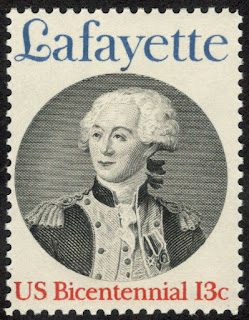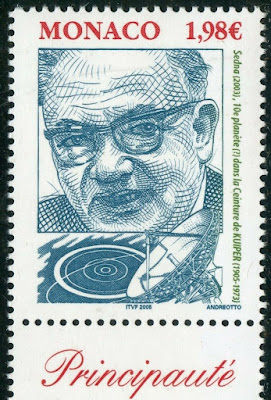1598 Born: Gian Lorenzo Bernini, Italian sculptor and painter (d. 1680)
Gian Lorenzo (or Gianlorenzo) Bernini (7 December 1598 – 28 November 1680) was an Italian sculptor and architect. While a major figure in the world of architecture, he was, also and even more prominently, the leading sculptor of his age, credited with creating the Baroque style of sculpture. As one scholar has commented, "What Shakespeare is to drama, Bernini may be to sculpture: the first pan-European sculptor whose name is instantaneously identifiable with a particular manner and vision, and whose influence was inordinately powerful...." In addition, he was a painter (mostly small canvases in oil) and a man of the theater: he wrote, directed and acted in plays (mostly Carnival satires), for which he designed stage sets and theatrical machinery. He produced designs as well for a wide variety of decorative art objects including lamps, tables, mirrors, and even coaches.
As architect and city planner, he designed secular buildings, churches, chapels, and public squares, as well as massive works combining both architecture and sculpture, especially elaborate public fountains and funerary monuments and a whole series of temporary structures (in stucco and wood) for funerals and festivals. His broad technical versatility, boundless compositional inventiveness and sheer skill in manipulating marble ensured that he would be considered a worthy successor of Michelangelo, far outshining other sculptors of his generation. His talent extended beyond the confines of sculpture to a consideration of the setting in which it would be situated; his ability to synthesize sculpture, painting, and architecture into a coherent conceptual and visual whole has been termed by the late art historian Irving Lavin the "unity of the visual arts".
Stamps from Monaco and the Vatican depicting Bernini or his works
1732 – The Royal Opera House opens at Covent Garden, London, England.
The Royal Opera House (ROH) is an opera house and major performing arts venue in Covent Garden, central London. The large building is often referred to as simply "Covent Garden", after a previous use of the site of the opera house's original construction in 1732. It is the home of The Royal Opera, The Royal Ballet, and the Orchestra of the Royal Opera House. Originally called the Theatre Royal, it served primarily as a playhouse for the first hundred years of its history. In 1734, the first ballet was presented. A year later, Handel's first season of operas began. Many of his operas and oratorios were specifically written for Covent Garden and had their premieres there.
The current building is the third theatre on the site following disastrous fires in 1808 and 1856. The façade, foyer, and auditorium date from 1858, but almost every other element of the present complex dates from an extensive reconstruction in the 1990s. The main auditorium seats 2,256 people, making it the third largest in London, and consists of four tiers of boxes and balconies and the amphitheatre gallery. The proscenium is 12.20 m wide and 14.80 m high. The main auditorium is a Grade I listed building.
Stamp from Great Britain depicting the Royal Opera House
1776 – Gilbert du Motier, Marquis de Lafayette, arranges to enter the American military as a major general.
Marie-Joseph Paul Yves Roch Gilbert du Motier, Marquis de Lafayette (6 September 1757 – 20 May 1834), known in the United States simply as Lafayette, was a French aristocrat and military officer who fought in the American Revolutionary War, commanding American troops in several battles, including the Siege of Yorktown. After returning to France, he was a key figure in the French Revolution of 1789 and the July Revolution of 1830.
Lafayette was born into a wealthy land-owning family in Chavaniac in the province of Auvergne in south central France. He followed the family's martial tradition and was commissioned an officer at age 13. He became convinced that the American revolutionary cause was noble, and he traveled to the New World seeking glory in it. He was made a major general at age 19, but he was initially not given American troops to command. He was wounded during the Battle of Brandywine but still managed to organize an orderly retreat, and he served with distinction in the Battle of Rhode Island. In the middle of the war, he sailed for home to lobby for an increase in French support. He returned to America in 1780 and was given senior positions in the Continental Army. In 1781, troops under his command in Virginia blocked forces led by Cornwallis until other American and French forces could position themselves for the decisive Siege of Yorktown.
Lafayette returned to France and was appointed to the Assembly of Notables in 1787, convened in response to the fiscal crisis. He was elected a member of the Estates General of 1789, where representatives met from the three traditional orders of French society: the clergy, the nobility, and the commoners. After forming the National Constituent Assembly, he helped to write the Declaration of the Rights of Man and of the Citizen with Thomas Jefferson's assistance. This document was inspired by the United States Declaration of Independence and invoked natural law to establish basic principles of the democratic nation-state. He also advocated the end of slavery, in keeping with the philosophy of natural liberty. After the storming of the Bastille, he was appointed commander-in-chief of France's National Guard and tried to steer a middle course through the years of revolution. In August 1792, radical factions ordered his arrest, and he fled into the Austrian Netherlands. He was captured by Austrian troops and spent more than five years in prison.
Lafayette returned to France after Napoleon Bonaparte secured his release in 1797, though he refused to participate in Napoleon's government. After the Bourbon Restoration of 1814, he became a liberal member of the Chamber of Deputies, a position which he held for most of the remainder of his life. In 1824, President James Monroe invited him to the United States as the nation's guest, and he visited all 24 states in the union and met a rapturous reception. During France's July Revolution of 1830, he declined an offer to become the French dictator. Instead, he supported Louis-Philippe as king, but turned against him when the monarch became autocratic. He died on 20 May 1834 and is buried in Picpus Cemetery in Paris, under soil from Bunker Hill. He is sometimes known as "The Hero of the Two Worlds" for his accomplishments in the service of both France and the United States.
US stamp and First Day Cover depicting Lafayette
1905 Born: Gerard Kuiper, Dutch-American astronomer and academic (d. 1973)
Gerard Peter Kuiper (born Gerrit Pieter Kuiper; December 7, 1905 – December 23, 1973) was a Dutch astronomer, planetary scientist, selenographer, author and professor. He is the eponymous namesake of the Kuiper belt. Kuiper is considered by many to be the father of modern planetary science. As professor at the University of Chicago, he was dissertation advisor to Carl Sagan. In 1958, the two worked on the classified military Project A119, the secret Air Force plan to detonate a nuclear warhead on the Moon.
Kuiper discovered two natural satellites of planets in the Solar System, namely Uranus's satellite Miranda and Neptune's satellite Nereid. In addition, he discovered carbon dioxide in the atmosphere of Mars and the existence of a methane-laced atmosphere above Saturn's satellite Titan in 1944. Kuiper also pioneered airborne infrared observing using a Convair 990 aircraft in the 1960s.
Kuiper spent most of his career at the University of Chicago, but moved to Tucson, Arizona, in 1960 to found the Lunar and Planetary Laboratory at the University of Arizona. Kuiper was the laboratory's director until his death in 1973: while on vacation with his wife in Mexico he had a heart attack. One of the three buildings at Arizona that makes up the LPL is named in his honor.
In the 1950s Kuiper's interdisciplinary collaboration with the geochemist and Nobel Laureate Harold C. Urey to understand the Moon's thermal evolution descended into acrimony, as the two engaged in what became known as the “Hot Moon Cold Moon” controversy. Their falling out, in part a scientific dispute, also reflected the challenge of maintaining professional relationships across overlapping but distinct scientific disciplines.
In the 1960s, Kuiper helped identify landing sites on the Moon for the Apollo program. His earlier work on the Moon included the secret Project A119, the secret Air Force plan to detonate a nuclear warhead on the Moon. Another scientist in the group was Carl Sagan, who was Kuiper's PhD student at the time of the project.
Kuiper discovered several binary stars which received "Kuiper numbers" to identify them, such as KUI 79.
Stamp from Monaco depicting Kuiper
1906 Died: Élie Ducommun, Swiss journalist and educator, Nobel Prize laureate (b. 1833)
Élie Ducommun (19 February 1833, Geneva – 7 December 1906, Bern) was a Swiss peace activist. He was a Nobel laureate, awarded the 1902 Nobel Peace Prize, which he shared with Charles Albert Gobat.
Born in Geneva, he worked as a tutor, language teacher, journalist and a translator for the Swiss federal Chancellery (1869–1873).
In 1867 he helped to found the Ligue de la paix et de la liberté (League of Peace and Freedom), though he continued working at other positions, including secretary for the Jura-Simplon Steel Company from 1873 to 1891. That year, he was appointed director of the newly formed Bureau international de la paix (International Peace Office), the first non-governmental international peace organization, based in Bern. He refused to accept a salary for the position, stating that he wished to serve in this capacity solely for reasons of idealism.
His keen organizational skills ensured the group's success. He was awarded in the Nobel Peace Prize in 1902, and served as director of the organization until his death in 1906.
Stamp issued by Guinea Bissau depicting Élie Ducommun







No comments:
Post a Comment